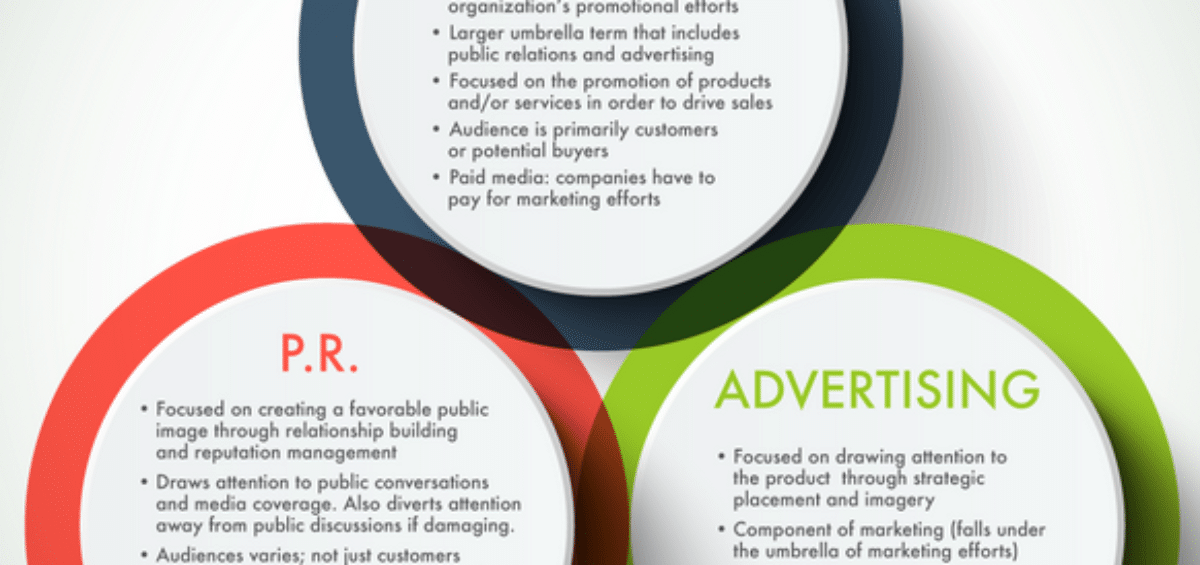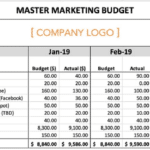In its most basic form, marketing is the process of promoting and selling a product or a service. So what about advertising vs marketing? And where does public relations fit in?
Marketing may seem to be synonymous with advertising. But although the two share similar goals and procedures, marketing covers a broader range of activities, methods and disciplines. Marketing also involves market research and analysis, product development, publicity, customer outreach and support, and so much more.
Advertising and public relations are entirely different disciplines that nonetheless cover a lot of the same ground as marketing.
When it comes to effective marketing, you need to know how to integrate marketing, advertising and public relations (PR). Marketing, advertising, and PR make up the full gambit of marketing services, but offer different advantages as well as similarities. Native advertising is a form of advertising meant to look like editorial content. If you don’t excel in marketing, you may need to team up with a marketing agency that knows how to integrate these three elements. In doing this, you are must more likely to avoid some of the more common content distribution mistakes. Let’s take a closer look at each of these elements and why they matter.
What Is Advertising?
Advertising primarily involves trying to convince your target audience to purchase a product or a service. In fact, most advertising is focused mainly on trying to get customers to buy a specific product. A lot of companies do organic advertising through blog posts. Promotion is a large part of advertising content. Social media advertising such as video marketing and promoting can be particularly popular and successful for businesses online.
Advertisements come in many forms and appear on a wide array of media platforms and formats. Print, billboards and posters are still powerful and effective mediums for advertising, as are TV and radio. Of course, the digital marketing age has brought advertising to the internet in what has proven to be one of the most lucrative and potent advertising platforms ever created. Video marketing is by far one of the most effective forms of marketing.
No matter where it appears and what form it takes, advertising is almost always tied in with a product or service. While marketing may cover a vast array of roles and functions, advertising is most often associated with a product that the company is trying to sell.
Marketing vs. Advertising
Advertising could be considered a subset of marketing, which is a broader, more encompassing discipline. Check out our article, What Does A Marketing Agency Do?, for a better understanding. While many of the roles and functions of advertising fall under the umbrella of marketing, not all marketing activities count as advertising.
In most cases, advertising departments focus solely on trying to get customers to purchase the company’s products or services. Marketers may have these goals as well, although they may also be involved in market research, media planning, sales strategy, and customer service. A very popular type of content used to in marketing and advertising is micro content. However, social media marketing tends to be one of the most popular facets of marketing for small businesses.
What Is Public Relations (PR)?
Public relations or PR essentially involves upholding or improving the image of a company. PR is mainly aimed at enhancing public perception or how the general public sees the company. PR may also involve boosting investor confidence among the company’s stakeholders.
The PR division may also serve as the company’s spokesperson or media representative when a statement has to be made regarding the company’s status or operations.
Much of the work of a PR officer involves maintaining the image of the company. They may also perform “damage control,” which is often necessary after a controversy arises that could potentially hurt the company’s reputation. PR officers may also help to smooth over a merger or acquisition by assuring the public of the continued operation of the new company.
What Does Public Relations Do?
In many organizations, PR officers serve as representatives when the company needs to make a comment to the press or provide a statement to the public. Their primary role is to improve or protect the image of a company.
A lot of the work of a PR officer involves coming up with press releases and disseminating these to media outlets and practitioners. They may also participate in speaking engagements online or in the real world and gather online and print articles and press releases about their company.
PR vs. Marketing
PR shares a different sort of relationship with marketing than advertising. Unlike advertising, which could be considered a subset of marketing, PR is more like another cog on the same wheel as marketing.
In terms of activities and methods, marketing focuses mostly on promotions, advertising and direct marketing. PR is mostly about encouraging positive media coverage.
The two also differ with regard to their goals. While most marketing efforts are geared toward making direct sales, PR is more focused on reputation management.
What Is the Difference Between Marketing, PR and Advertising?
The differences between marketing, advertising and PR become more apparent when you identify the goals of each. With marketing, the primary goal is to attract new customers into the fold and to keep existing customers happy. A lot of marketing, therefore, involves trying to figure out what customers need and how best to provide it to them.
Advertising is also about attracting new customers. One of the main goals of advertising is to inform the public about a new product, but it also serves to remind previous customers about the continued existence of the brand.
PR is more focused on the company or brand than the individual products. The primary goal of a company’s PR arm is to maintain the reputation of the company as successful and well-regarded. PR departments may also create an image for a new company or strive to improve the image of a company that is reeling from a scandal or controversy.
There is often a lot of overlap in the roles and functions of marketing, advertising and PR professionals. Marketing campaigns in particular can benefit considerably from having all these individual departments coordinate with each other and collaborate as early on in the marketing process as possible.
Many companies find it beneficial to get their marketing, advertising and PR departments to work together as a single unit, rather than keep them as separate entities within the firm. For instance, marketing assets can be used to help the PR department get better media exposure. The PR department, for its part, can pinpoint sales opportunities for marketers or help advertising develop more effective campaigns.
What it ultimately comes down to is that marketing, advertising and PR share the same goal: the success of the company. Rather than seeing each other as competitors, these departments will better serve their parent firm by working with and complementing each other’s strengths.
How Does This Shape Your Marketing Plan?
Close coordination and cooperation are essential to the success of marketing, advertising and PR departments individually and as a whole. PR and marketing departments, in particular, are much more effective when working together toward a common goal.
When putting together a marketing plan, think about how you can interface with your PR department and vice versa. Try to come up with ways to maximize each department’s potential and coordinate between them to make them more successful in their individual roles. With a comprehensive marketing plan that integrates PR and advertising with marketing, you can keep from missing out on valuable opportunities. You can also nable each department to accomplish goals they wouldn’t be able to do on their own. And lastly, you can better allocate your marketing budget to achieve a strong ROI.






